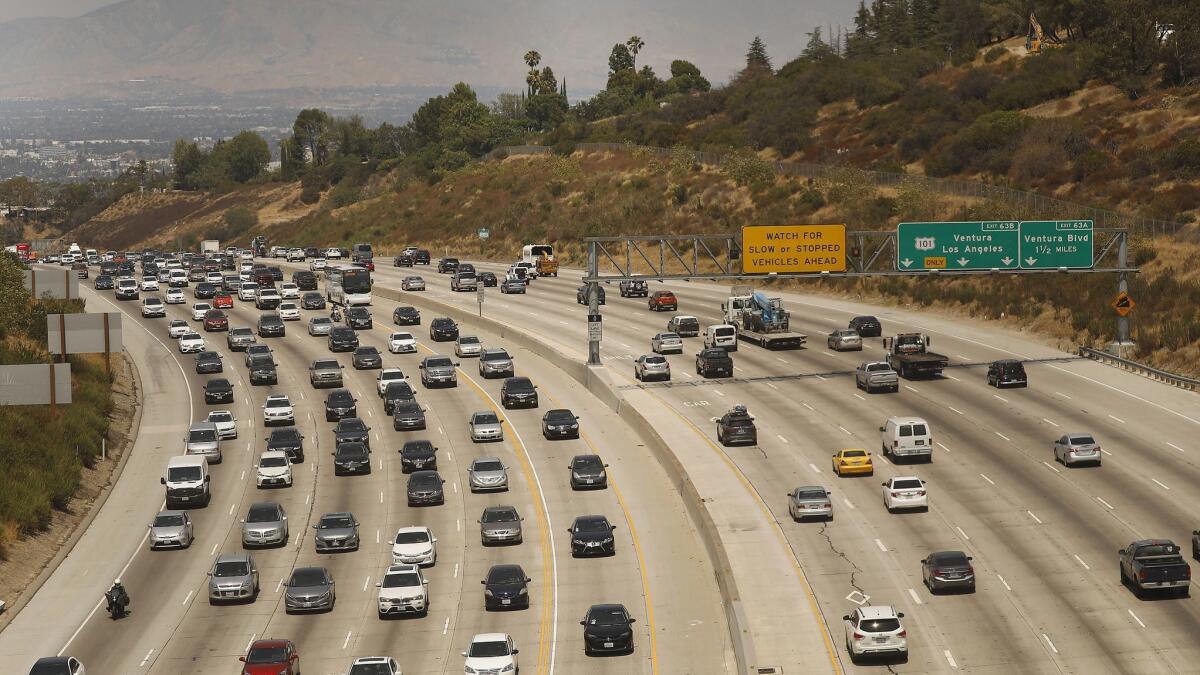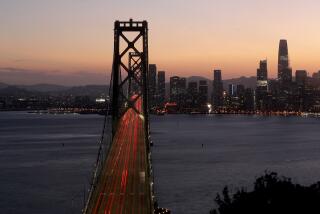Editorial: California talks a good game on land-use and climate change, but it’s still a land of SUVs and sprawl

A decade ago, California lawmakers passed a groundbreaking law that was supposed to help fight climate change by curbing urban sprawl. Senate Bill 375 required the state’s 18 regional agencies to plan and design housing and transportation projects so people wouldn’t have to drive as much, cutting the greenhouse gas emissions responsible for global warming.
That was the goal, and all 18 regions have adopted a so-called Sustainable Communities Strategies. But California today is just as sprawling and car-dominated as it was a decade ago. A report released this week from the California Air Resources Board finds people are driving more, not less. The transportation sector is the state’s largest source of greenhouse gases, and emissions have risen despite the arrival of vehicles that burn less fuel per mile.
On paper, California may have committed to building more walkable, bike-able, transit-friendly communities. In practice, cities, counties and the state are failing to follow through.
And so people are often forced to make bad choices. It’s too expensive for many people to live near their workplaces in coastal urban areas, so they buy or rent homes in far-flung suburbs and make the long commute. Within communities, there aren’t enough good options for getting around without a car. Homes are often far from grocery stores and schools. There aren’t enough parks within walking distance. The design of our cities can make it challenging, time consuming or downright dangerous to walk, bike or take public transit.
Enter the Fray: First takes on the news of the minute from L.A. Times Opinion »
Yet California will not meet its greenhouse gas reduction targets unless there is a dramatic change in the way communities and transportation systems are planned and built.
One problem is that there is no real requirement for cities and counties to follow their region’s plans, and there are no penalties when they don’t. Housing, land-use and transportation decisions are made at the local level. However, local leaders too often shy away from supporting the transformative but controversial changes needed, such as building taller, denser housing close to transit hubs or adding protected bike lanes to city streets.
Nor have state officials done enough to align transportation spending with climate goals. California still spends the vast majority of its transportation dollars on roads to serve drivers. Despite the goal of getting people out of their cars, there has been little move to spend a greater proportion of dollars on other modes of transportation. No wonder that transit ridership and carpool rates have fallen across the state, and that three out of four commuters drive alone to work.
The state will spend $1.1 trillion on transportation over the coming decades, which could dramatically expand the options for Californians to get around without a car — but only if there is a concerted effort to change. It’s clear that simply adopting sustainability plans isn’t enough. If California is going to meet its ambitious greenhouse gas reduction commitments, lawmakers and local leaders have to live up to the commitments in those plans.
Follow the Opinion section on Twitter @latimesopinion and Facebook
More to Read
A cure for the common opinion
Get thought-provoking perspectives with our weekly newsletter.
You may occasionally receive promotional content from the Los Angeles Times.






